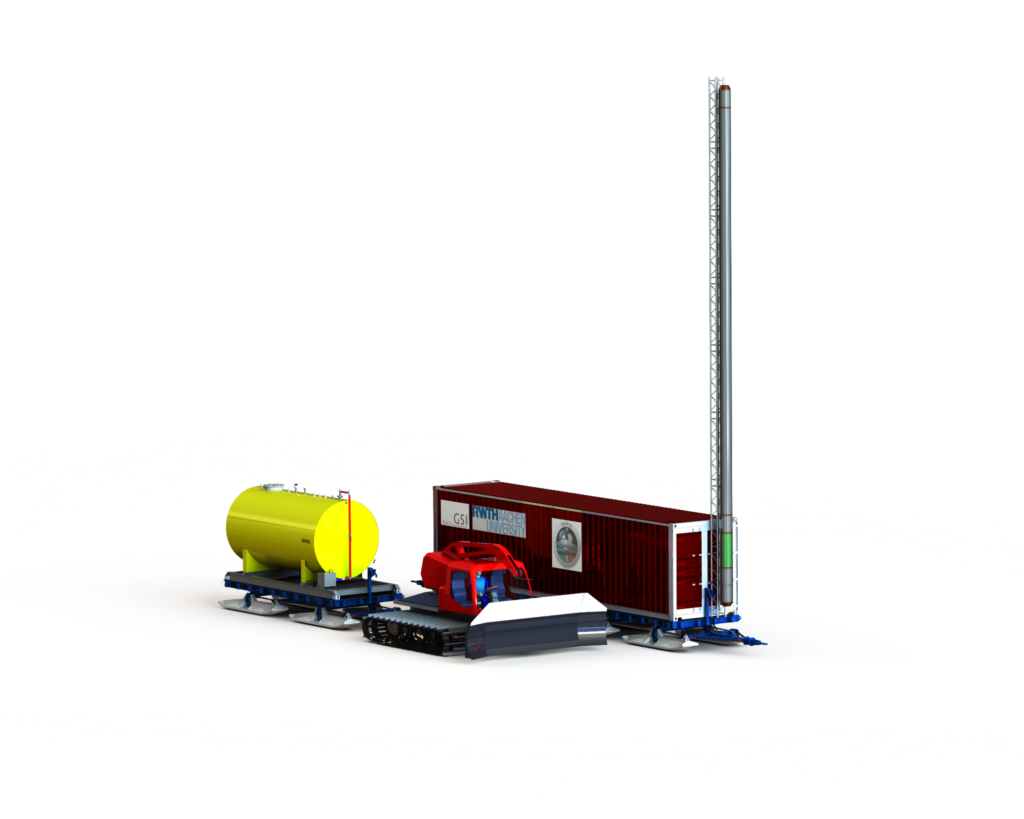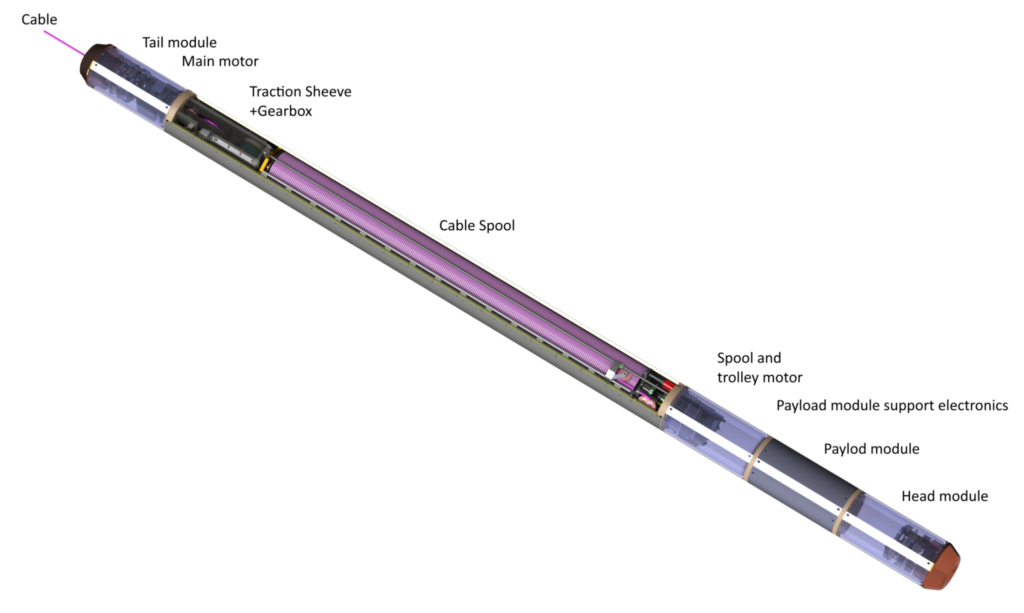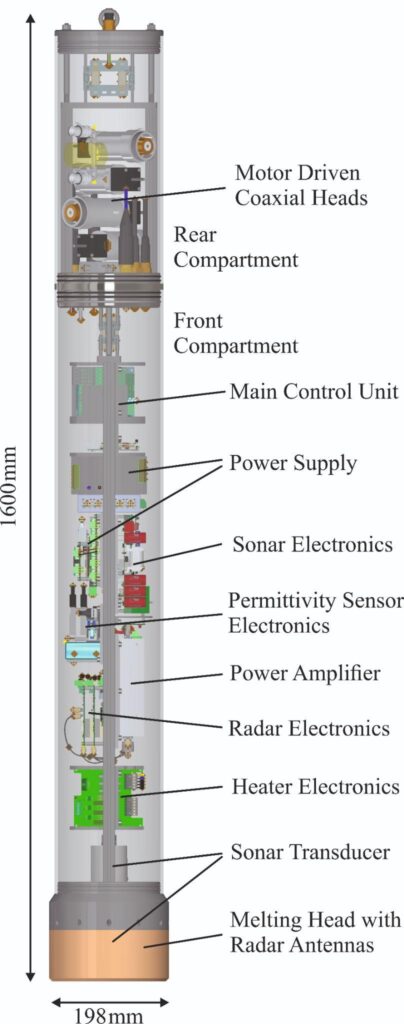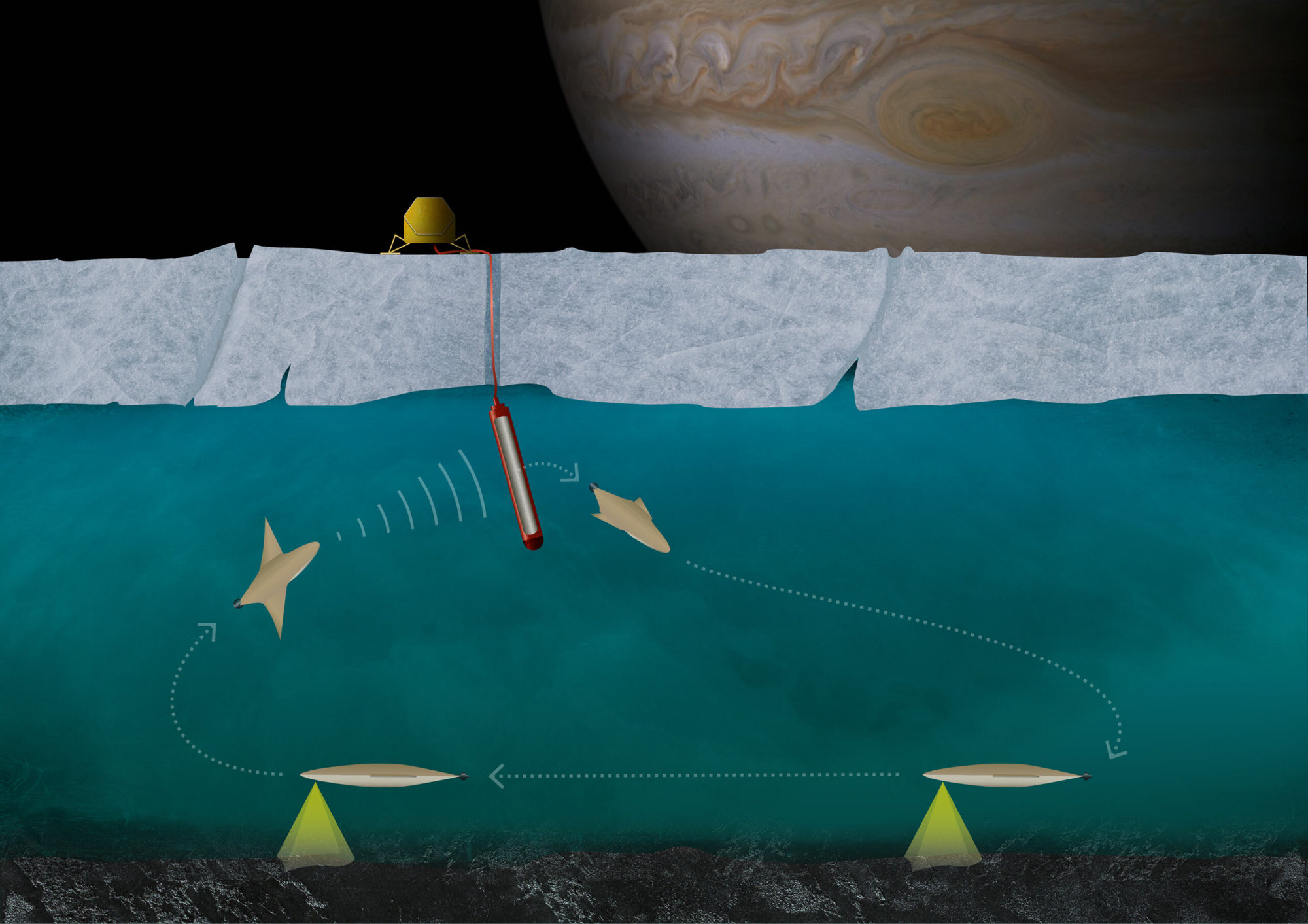Melting Probe
The Dome-C mission demands a retrievable melting probe to get through a 4 kilometers-thick ice-layer. For the mission it is of great importance for the melting probe to be capable of detecting and avoiding obstacles on its trajectories, anchoring at the ice-water boundary to release and support the nanoAUV.
Among the numerous challenges faced by the melting probe is the necessity for a high melting speed to accomplish the mission within a single Antarctic summer season. Taking the distance of 4 kilometers into account, a minimum speed of 10 m/h is needed. To reach this high speed a high power transmission with as little loss as possible over the large cable length is required. As the most critical component, the cable must also bear the weight of the probe.

(© GSI GmbH)
In 2014, the very first successful application of a melting probe to collect contamination-free subglacial water samples was demonstrated by the melting probe “Ice-Mole” on the Antarctic Taylor glacier. The Ice-Mole was developed within the Enceladus Explorer (EnEx) project mounted by In 2014, the very first successful application of a melting probe to collect contamination-free subglacial water samples was demonstrated by the melting probe “Ice-Mole” on the Antarctic Taylor glacier. The Ice-Mole was developed within the Enceladus Explorer (EnEx) project mounted by the German Space Agency at DLR. To get to the scientific object of desire, a crevasse in the Taylor glacier, the Ice-Mole had made its way through an ice layer of about 16 m with a melting speed of one meter per hour [2].

(© GSI GmbH)
In the initial development phase of TRIPLE, the TRIPLE-IceCraft melting probe served as a technical feasibility prototype. It is a modular melting probe developed in collaboration between the GSI GmbH and the RWTH Aachen University. The design aims for a fully functional and retrievable melting probe that provides standardized cargo area for arbitrary scientific payloads and a drill depth of several hundred meters. It is designed for a maximum speed of up to 5 m/h. One of the key challenges is the full retrievability of the system and therefore the need for a dedicated cable management system. This is constructed as a combination of internal storage and an electric-motor-powered winch for uncoiling and recoiling the cable.
The development of the forefield reconnaissance system for the melting probe is running in parallel within the project TRIPLE-FRS and TRIPLE-FRS-2. A combination of radar and sonar techniques is chosen to benefit from both sensor systems inside ice. To account for the respective propagation speed of electromagnetic waves, an in-situ permittivity sensor will also be included. Additionally, a specialized pulse amplifier has been developed and integrated for the radar system. By integrating the radar antennas together with a acoustic transducer into the melting head, obstacles as well as the ice-water interface can be detected.

Publications
[1] D. Heinen, J. Audehm, F. Becker, G. Boeck, C. Espe, M. Feldmann, G. Francke, P. Friend, N. Haberberger, K. Helbing, C. T. Nghe, M. Stelzig, M. Vossiek, C. Wiebusch & S. Zierke, „The TRIPLE Melting Probe – an Electro-Thermal Drill with a Forefield Reconnaissance System to Access Subglacial Lakes and Oceans“, OCEANS 2021: San Diego – Porto, 2021, pp. 1-7, doi: 10.23919/OCEANS44145.2021.9705999.
[2] J. Kowalski et. al., “Navigation technology for exploration of glacier ice with maneuverable melting probes”, Cold Regions Science and Technology, Volume 123, 2016, Pages 53-70, ISSN 0165-232X, doi: 10.1016/j.coldregions.2015.11.006
